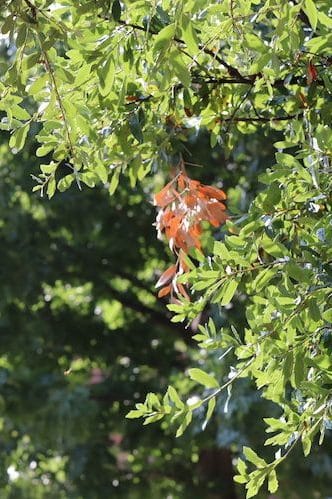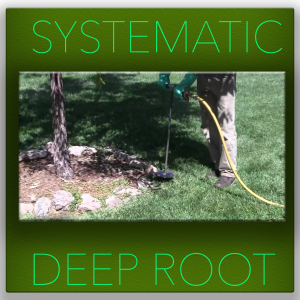Tree Fertilization in Fort Worth, TX
Root feeding is probably one of the most important factors for longevity and great tree growth spurts for your tree’s overall health. Root fertilization is an application that can be injected straight into the soil on trees lacking the necessary nutrients for their overall health. Remember the trees are a living organism just like a human being and they need the proper nutrients to grow and flourish in their environments.
Soil samples to be taken to see if there’s adequate nitrogen, magnesium, potassium, sulfur, phosphorous, boron, chlorine, copper, and zinc just to name a few. These are vitally important for the overall trees growth patterns and longevity. Root fertilization can be easily applied to the soil after the testing has taken place and it has been determined that there is a lack of one of these nutrients. In some cases, this can be a great solution or alternative to tree injections that do not require pesticides. It is important to schedule root fertilization right before the trees growth spurt to give it the adequate necessary nutrients for this process.
To get your soil sample tested today call one of our professional tree arborists and we will schedule an appointment to see how we can combat your tree’s from over stressing.
Systematic Deep Root Feeding
Trees in urban atmospheres are often under high tension conditions because of low saturation accessibility, dirt compaction, physical harm, lawn work, and also competitors from grass and also close-by trees and bushes. Plant food applications could minimize, but can not do away with, ecological tensions such as these. It is necessary to maintain freshly planted trees watered as well as pruned to maintain weeds away from their bases to avoid excess tension and keep them healthy. The best indication of whether fertilization is necessary is a dirt examination.
Ideally, a dirt example ought to be taken before trees are planted or for existing trees do the same. In the soil test, you will evaluate there’s is a need for added fertilization of well-established trees is shoot development. If aspiring shoot development (growth occurring in today year) is in excess of 7 inches after that fertilization is probably unneeded. If shoot growth is between 3 as well as 7 inches then plant food may be used and, if shoot development is under 2 inches after that plant food applications are suitable as indicated in the “Application methods and also rates” part of this guide.
Vegetation shade is an additional indication of the demand for fertilization. browning or “off-color” leaves might suggest the requirement for fertilization as these signs and symptoms generally take place on trees which are not using up sufficient of several called for nutrients. However, that evidently “shady” fallen leaves are regular for sure plants such as ‘Sunburst’ Red oaks and some maple and also apple berry trees in the fall.
A final indication of the demand for fertilization is the record of the backyard. Trees in backyards that are fed for turf on a regular basis hardly ever have to have extra plant food applied. Supplemental plant food ought to just be thought about if shoot growth is much less compared to 2 inches, or if a soil examination exposes a specific nutrient shortage.
The Importance of Tree Fertilization
If the only sign of the demand for fertilization is slow to shoot growth, after that a high nitrogen fertilizer ought to be put on the tree after the recommendations in the “What to apply” part of this guide. If nevertheless, the leaves of the tree are yellowing, or there is another indication of a nutrient deficiency, then it is ideal to take a dirt sample from around the root area of the tree and have a dirt evaluation performed.
Browning may be because of a variety of nutrient shortages or a lack of. One of the most typical factors for browning foliage in Texas is a lack of iron and in some cases manganese. Deficiencies of these components are typical as a result of a high pH (8.0 or higher) as opposed to an absence of these nutrients in the dirt.
Benefits of Deep Root Feeding in Fort Worth, Texas
Because various trees do well at different pH levels, it is strongly suggested that dirt is looked for pH prior to growing. If you know that the soil has a pH of 8.0 or higher, be certain to explore varieties that could take up iron and manganese under high pH conditions such as the plants detailed in Table 1. If a vulnerable tree has actually already been planted on a high pH site, pH can be reduced by changing the soil with essential sulfur and also using a plant food high in ammonium, such as ammonium sulfate to supply nitrogen demands. Lowering the pH of a soil is a lengthy extracted process that could take several years to remedy.


